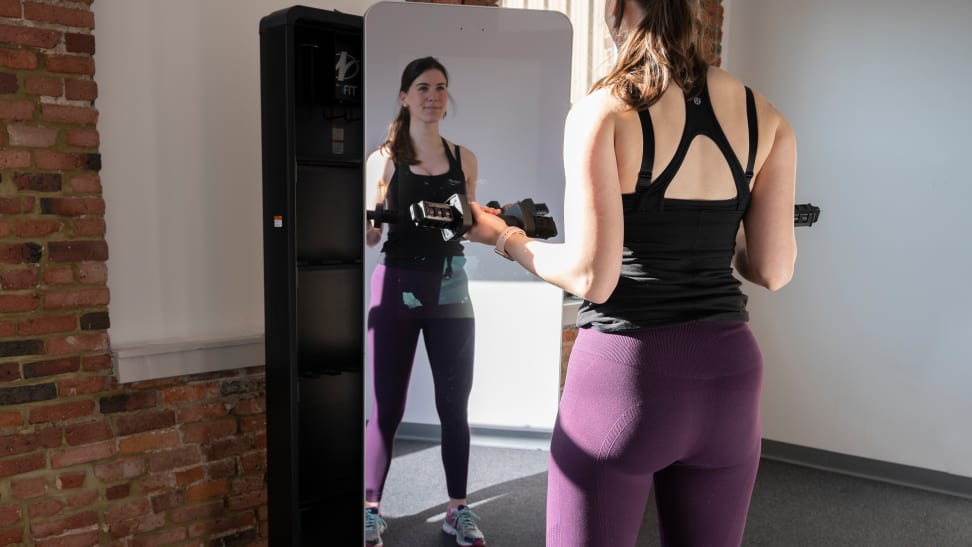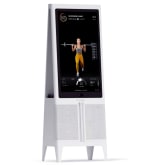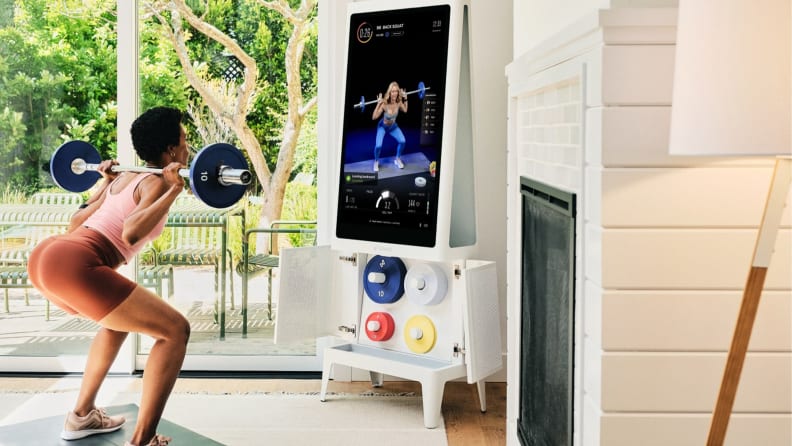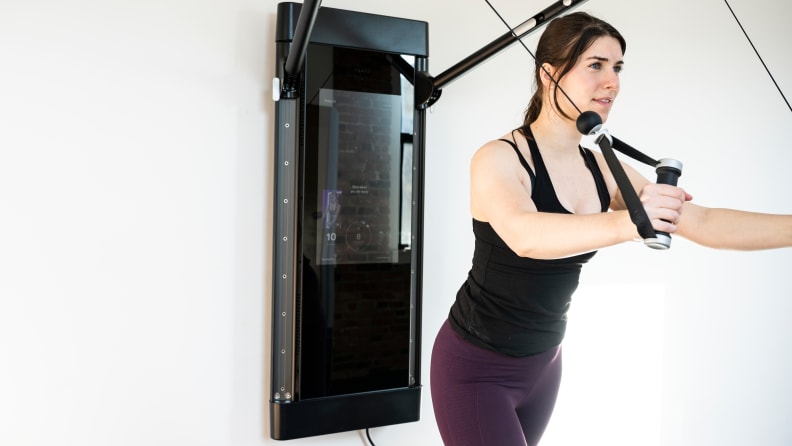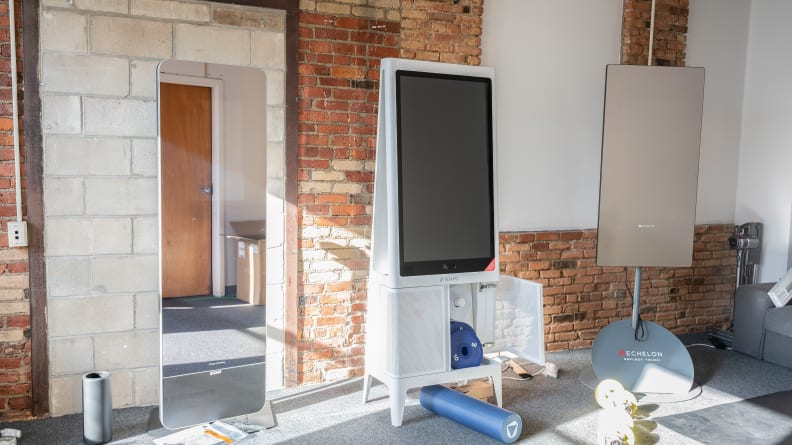The Tempo Studio topped our tests, thanks to its AI-powered virtual training, a feature only few other mirrors could match. The Studio has a camera equipped with a 3D sensor that analyzes your movements to offer real-time corrections throughout your workouts and let you know when you’ve fixed your mistakes. It also counts your reps so you don’t have to.
Using the Studio is simple and fun. When you first sign up, you take a quick quiz about your preferred exercise styles and goals. From there, Tempo recommends classes it thinks you’ll enjoy and designs a training plan to help you reach your goals. I loved every class I took with Tempo. I mainly focused on strength training—to take advantage of the included weights and smart feedback—but also the occasional pilates or HIIT class. Every session had a variety of movements in it so they never felt repetitive, and all the instructors were fun, motivating, and knowledgeable. Though it would be easy for instructors to rely on the Tempo’s smart feedback, they still gave detailed guidance about how your moves should look and feel to help keep you on track.
You can take both live and prerecorded classes and can also choose from a variety of programs such as ”two-week intro to strength” or “six-week functional fitness” should you want a more structured plan. Tempo aims to personalize your class experience by recommending how much weight you should lift using the included dumbbells that start at 7.5 pounds each and come with plates to load up to 45 pounds per weight. Tempo asks whether the recommendations were too light, too heavy, or just right and will adjust accordingly. As you get stronger, it suggests heavier weights, or you can manually change your settings to your preference.
The Studio also has an optional leaderboard during class. You can get points by completing more repetitions or lifting more volume (the choice is yours) or hide the leaderboard completely. I kept the leaderboard turned off most of the time—I’m not one for competition during my workouts, but for those who get jazzed by seeing how they’re stacking up, the leaderboard could be inspiring.
Though the Studio has plenty of amazing features, it’s not a perfect system. For one, it doesn’t look like the typical workout mirror and it takes up more space than many—it has a freestanding easel shape that measures 6 feet tall and 1 foot 4 inches deep at the base and it requires you to stand 6 feet away from the 3D sensor so it can assess your form. Requiring over 7 feet from the back of the mirror to where you stand and exercise, the Studio isn’t great for small rooms. And though the form feedback is a huge plus, you only get visual cues on the screen rather than audio notifications, making it difficult to see and apply the corrections at times. Another potential downside: The Studio’s AI features only provide form feedback during some workouts, specifically those that involve squats, curls, press, pushups and barbell exercises. Though the company says they are working to make the AI available for yoga classes (and others as their class library expands), the lack of consistency could be a bummer for some.
Luckily, what it lacks in comprehensive virtual instruction it makes up for in gear: The Studio’s starter package comes with two 7.5-pound dumbbells, four 1.25-pound plates, four 2.5-pound plates, four 5-pound plates, four 10-pound plates, collars, and a yoga mat. The Plus package adds on a 25-pound barbell, a folding bench, two 25-pound plates, a foam roller, and a heart rate monitor. The Pro package throws in a folding squat rack, two 45-pound plates, and a kettlebell system that lets you use your existing plates. These weights, even at the basic starter level, allow users to get the health benefits of strength training. Tempo’s monthly membership costs $39 a month (the going rate, as set by Peloton) and allows up to six people to create an account on one device, allowing more than one user to save their stats and use the Studio to its fullest extent.
First year total cost: $2,495 (for the starter package) or $3,245 (for the plus package) or $3,495 (for the pro package) + $468 (for membership) = $2,963 to $3,963
